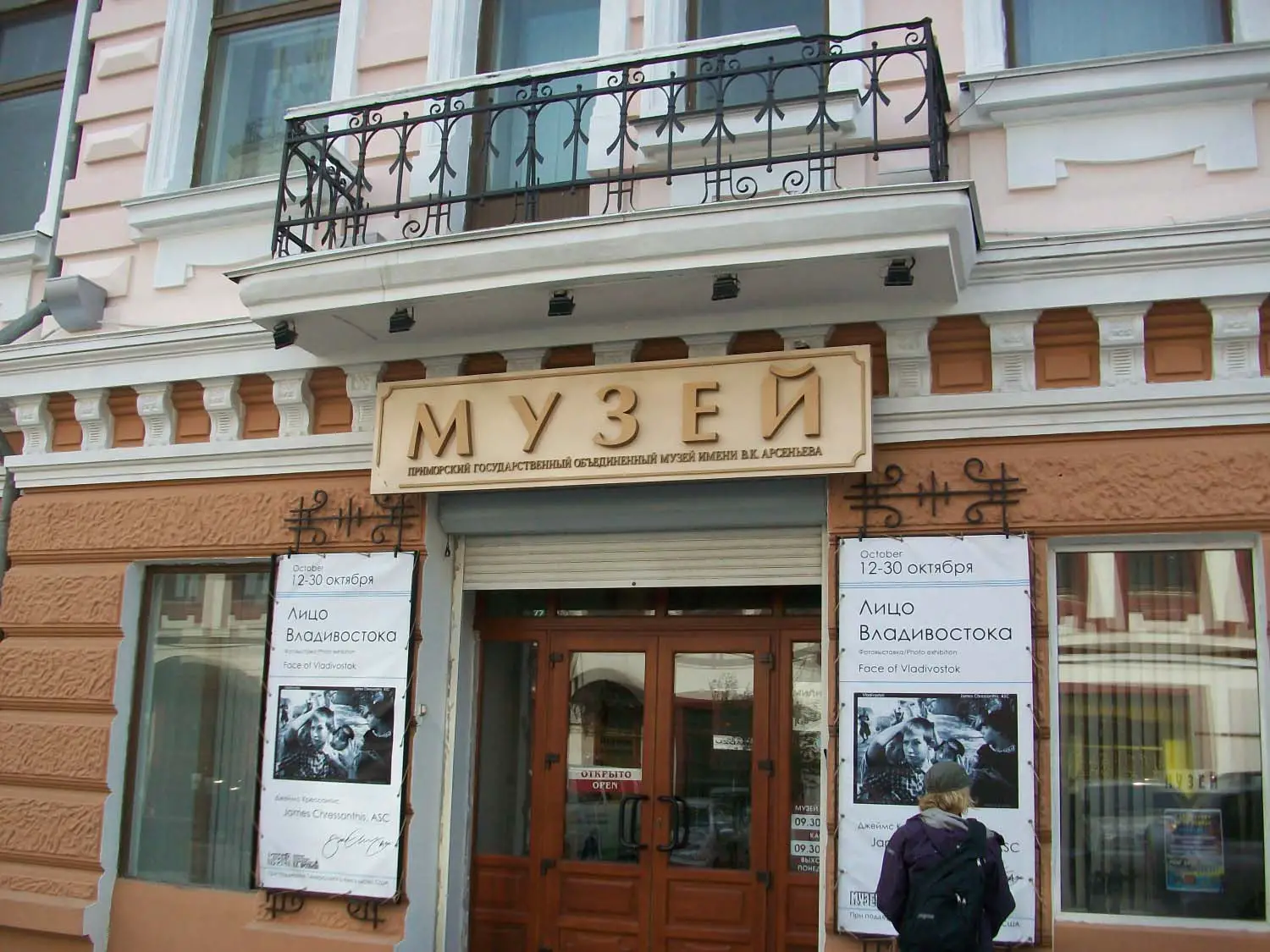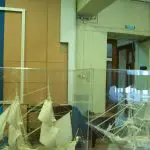Приморский Государственный Объединенный Музей им. В.К. Арсеньева
/ Primorsky State Associated Museum of V.K. Arsenyev
Светланская ул., 20 / Svetlanskaya Street, 20
Hours of Operation: 9:30 a.m. – 5 p.m., Tuesday – Sunday
Cost: 100 Rubles (70 with student ID), plus another 100 to use a camera
Walking around Vladivostok recently, I noticed an advertisement for a photography exhibition put together by an American. A few days later, the same exhibition and the museum it was in were recommended to me by one of VSUES’ staff members. In the end, I decided to check out what I thought was going to be a small gallery with black and white photos hanging on the wall. Boy was I wrong.
That’s how I discovered the Приморский Государственный Объединенный Музей им. В.К. Аревеньева, or the Primorsky State Associated Museum of V.K. Arsenyev, one of two museums in the city named after the explorer Vladimir Klavdiyevich Arsenyev. While the name of the museum doesn’t exactly reflect it, the museum’s exhibits focus on the nature, history, and culture of the Primorsky Krai, with an emphasis on Vladivstok. The entrance fee is 100 rubles, but if you flash a student ID, you can get in for only 70 rubles. I paid an extra 100 so that I could take pictures as well, and, in my opinion, it was worth it as there were a lot of interesting things to see.
The museum is composed of three floors, each devoted to a different area of study of the region. The first floor focused on the nature found in the Primorsky Krai. There were several rooms filled with taxidermy of all different local sorts. In one of the rooms on the first floor, there was a stuffed tiger fighting a bear, and a tour guide leading a group of school kids took a poll from the children to find out who would win that fight. The vote was unanimous for the Amur tiger, the animal that the region is famous for (it’s even on the city’s coat of arms). Each individual exhibit detailed the Russian and scientific names of all the plants and fauna. However, none of the information was in English.
The top floor consists of four rooms, which detailed the discovery, settlement, and expansion of Vladivostok. In one exhibition room, I found three- to four-thousand-year-old artifacts. These included pots, tools, and decorations. We’d recently been reading a lot about the founding of Vladivostok and the Primorsky Krai at VGUES, so it was interesting to see all the old photos of the explorers that we had been learning about. There was also a large diorama depicting Vladivostok’s main streets (Алеутская and Светланская, the corner of which the museum itself is located on) as they were over one hundred years ago, as well as a slideshow of pictures of early Vladivostok being played nearby.
The top floor had three different exhibits. The first was the photo exhibit that had originally attracted me to the museum. Put together by the American photographer, James Chressanthis, the exhibit “Faces of Vladivostok” was composed of his own black-and-white photos of people around Vladivostok. The next room was dedicated to a children’s art competition and was filled with different paintings, stitching, dioramas, and more that had been sent in by children of the Primorsky Krai. The quality of work was truly amazing considering the ages of some of the children. The final section of the top floor concerned the Primorsky Krai’s involvement in the Russian Civil War and World War II. On display were various maps, weapons, and medals found during those periods. They even had some supplies taken from Nazi soldiers (the boots looked like they weighed 50 pounds!).
This museum is one of those obligatory places that any person living in Vladivostok should visit. While there’s not a whole lot of written information and almost no information in English, the museum does a good job of conveying the history and nature of the region. If you want to have a good look at everything, plan on spending 40-50 minutes in this museum. There’s simply a lot to see. Also, bring a friend and you can even spend hours debating the fighting merits of bears and tigers of the Primorsky Krai!












